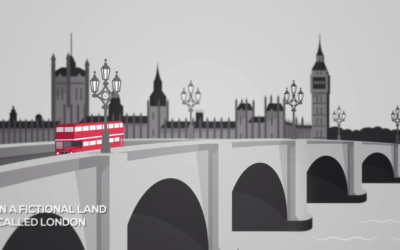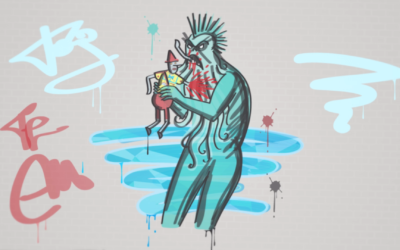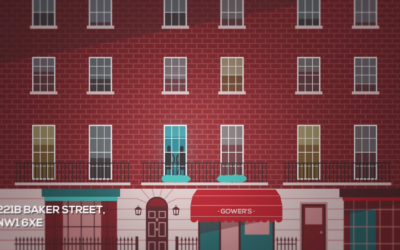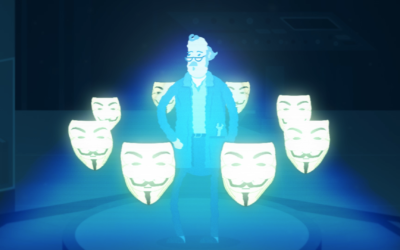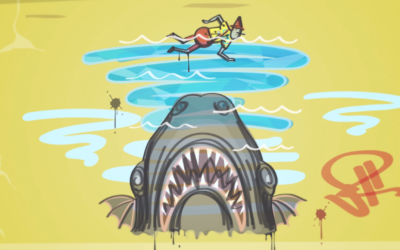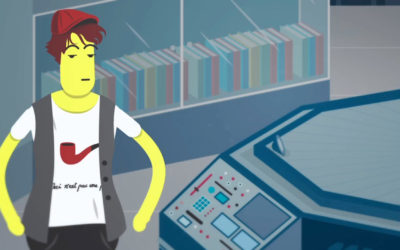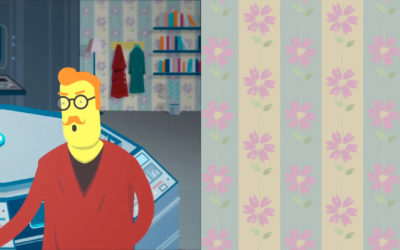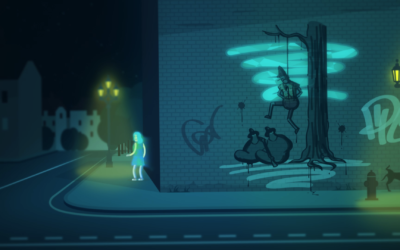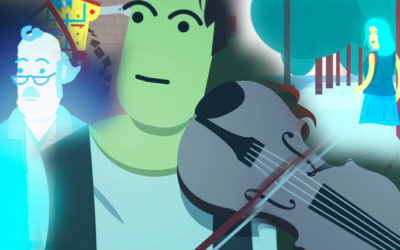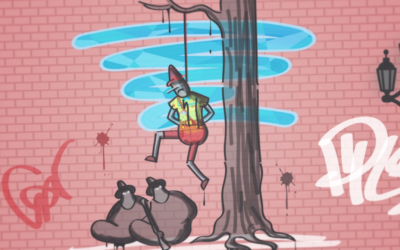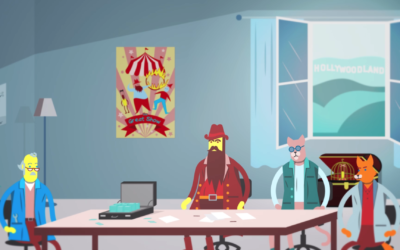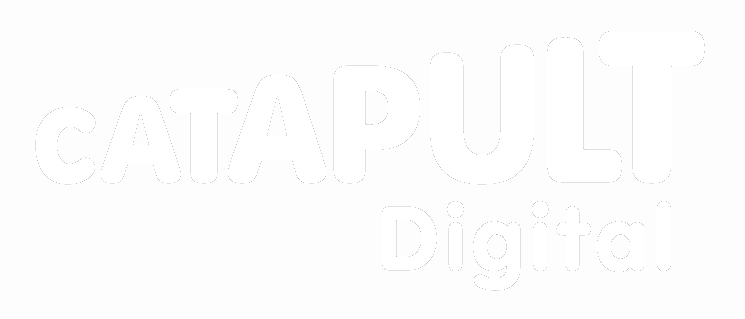0. SOME COPYRIGHT BASICS
In the various Case Files that accompany the six episodes of The Game is On! – 33 in all – we explore a wide range of issues relating to core aspects of copyright law.
For example, we consider the justifications for copyright protection, the criteria for copyright protection, what it means to author or own a copyright work, how recent developments in technology have prompted changes in the law, and much more.
In this introductory Case File #0, we provide a basic overview of the economic rights that copyright owners enjoy. It is crucial to understand when permission to make use of someone’s work is required. And, when we understand when permission is required, we also begin to appreciate when permission to make use of someone’s work is not.
COPYRIGHT: A BUNDLE OF RIGHTS
Copyright owners enjoy a bundle of economic rights, defined within the Copyright Designs and Patents Act 1988 (CDPA). This bundle of rights is set out in section 16 of the CDPA; it includes the right to:
-
Copy the work: the reproduction right (further defined in s.17 of the CDPA)
-
Issue copies of the work to the public: the distribution right (see s.18)
-
Rent or lend the work to the public: the rental right (see s.18A)
-
Perform, show, or play the work in public: the public performance right (see s.19)
-
Communicate the work to the public, whether online or otherwise: the communication right (see s.20)
-
Make an adaptation of the work or do any of the above in relation to an adaptation: the adaptation right (see s.21)
Doing any of these acts without permission will infringe copyright in the work, and the owner will be entitled to some form of relief or compensation (but see further below).
Moreover, it will generally not make any difference that the infringing copy takes a differ- ent form to the original. For example, converting a two-dimensional image into three dimen- sions, and vice versa, will still constitute infringement; similarly: turning a story into a ballet; copying a photograph by painting; turning a drawing such as a cartoon into a sketch or a piece of theatre, and so on.
NOT EVERY OWNER ENJOYS EVERY ECONOMIC RIGHT
It is important to understand that not every economic right is granted to every copyright owner. There are eight different types of work that benefit from copyright protection under UK law, and the bundle of rights an owner enjoys varies depending on the type of work you are dealing with.
For example, while performing or showing a musical work in public without permission is an offence under s.19, performing or showing an artistic work is not. Similarly, the right to make an adaptation of a work only applies to literary, dramatic and musical works, but not to artistic works, sound recordings, films or broadcasts. (Although, if you make an adaptation of an artistic work, for example, or of a film, you will still probably infringe the owner’s right to make a copy of their work; see Case File #17 for more details.)
In the table that follows, we set out the economic rights provided under the CDPA (along the top row) indicating which rights apply to each of the eight types of protected copyright work. You’ll find more information about each of these types of protected work throughout the Case Files.
|
|
MAKE COPIES |
DISTRIBUTE COPIES |
RENT OR LEND |
PERFORM IN PUBLIC |
COMMUNICATE TO THE PUBLIC |
MAKE AN ADAPTATION |
|
LITERARY WORK |
Y |
Y |
Y |
Y |
Y |
Y |
|
DRAMATIC WORK |
Y |
Y |
Y |
Y |
Y |
Y |
|
MUSICAL WORK |
Y |
Y |
Y |
Y |
Y |
Y |
|
ARTISTIC WORK |
Y |
Y |
Y |
N |
Y |
N |
|
FILM |
Y |
Y |
Y |
Y |
Y |
N |
|
SOUND RECORDING |
Y |
Y |
Y |
Y |
Y |
N |
|
BROADCAST |
Y |
Y |
N |
Y |
Y |
N |
|
TYPOGRAPHICAL ARRANGEMENT |
Y |
Y |
N |
N |
N |
N |
Table 1: Economic rights and types of work
For further details, see the Copyright Cortex, ‘Economic Rights and Infringement’.
A BUNDLE OF QUALIFIED RIGHTS
Above, we mentioned that doing any of the acts protected under the CDPA without permission will infringe copyright in the work.
However, we need to qualify that statement in three important ways.
First, while s.16 of the CDPA sets out the various acts restricted by copyright, the legislation also states that you only infringe by doing those acts in relation to ‘the work as a whole or any substantial part of it’. This means it is permissible to make use of another’s copyright work so long as you are not copying any more than an insubstantial part of that work.
Second, although copyright protects works against certain types of unauthorised use, there will always be elements of the work that remain unprotected and so free to use without permission. Consider, for example, the so-called idea-expression dichotomy. Essentially, copyright does not protect ideas, only the way in which an author has expressed her ideas. So, to copy ideas is lawful. But, to copy the way in which an idea has been expressed by another author without permission is not lawful. Moreover, it is not just ideas that remain in the public domain. Copyright does not protect information, facts, theories or commonplace themes ordinarily used when creating cultural works.
Third, and most important, are the exceptions to copyright. Every copyright regime throughout the world limits the copyright owner’s rights in specific ways by allowing certain things to be done with their work without the need for the owner’s permission. These permitted acts (referred to as copyright exceptions) represent an attempt to strike a balance between the economic rights of the copyright owner and other uses considered to be socially, culturally, politically or economically beneficial.
In the UK, these exceptions are set out in sections 28-76 of the CDPA. There are general exceptions designed to facilitate the use of work by anyone, for example, for the purposes of research and private study, for criticism and review, or for reporting current events. Other exceptions are intended to enable the use of copyright material within certain institutional contexts, for example, by educational institutions, or by libraries and archives.
We address each of these issues in greater detail throughout the Case Files.
USEFUL REFERENCES
Copyright Designs and Patents Act 1988: http://www.legislation.gov.uk/ukpga/1988/48/contents
COPYRIGHT CORTEX, ‘Economic Rights and Infringement’, available: https://copyrightcortex.org/copyright-101/chapter-5
Download the PDF version of Case File #0 – Some Copyright Basics
More Case Files
1. The Red Bus
The Adventure of the Girl with the Light Blue Hair starts with a red double-decker bus travelling across Westminster Bridge, with the Houses of Parliament in the background.
2. The Monster
One of the graffiti that scare the toymaker Joseph portrays a monster eating his ‘beautiful, wonderful toy’. The image of the monster is inspired by two different artistic works
3. The Baker Street Building
Sherlock Holmes and John Watson discuss Joseph’s case at 221B Baker Street. The above illustration is inspired by two sources…
4. The Anonymous Artist
Joseph, the toymaker, has asked the police to identify the culprit making ‘dreadful images’ of his toy, portraying it in violent situations.
5. The Terrible Shark
This illustration from our video depicts a terrible shark-like creature about to eat Joseph’s toy. It was inspired by two different images…
6. The Famous Pipe
The pipe has been associated with the image of Sherlock Holmes since Sir Arthur Conan Doyle’s (1859 – 1930) stories were first published in The Strand Magazine with illustrations by Sidney Paget (1860 – 1908).
7. The Matching Wallpaper
In the background of Holmes and Watson’s apartment you can see wallpaper with ‘flowers scattered over it in a somewhat impressionistic style’.
8. The Dreadful Images
The ‘dreadful images’ that scare Joseph, the toymaker, are graffiti drawn all over the ‘fictional land called London’. The illustration above, depicting Joseph’s toy hung from a tree, is based on an actual place in London.
9. The Improbable Threat
In trying to persuade Holmes to take Joseph’s case, Watson asks: ‘What if it’s a threat? That’s what the graffiti might mean.’ These eleven words are based on dialogue from The Blind Banker…
10. The Uncertain Motivation
Joseph, Sherlock Holmes and the Girl with the Light Blue Hair are all creators: Joseph draws and designs toys; Sherlock composes music; and the mysterious girl is an accomplished street artist.
11. The Mutilated Work
In trying to persuade Holmes to take the case, Watson argues that: ‘If you were a professional musician, you wouldn’t want people copying or mutilating your work’.
12. The Hollywoodland Deal
Joseph explains to Holmes and Watson when and why the dreadful images of his beautiful, wonderful toy began to appear all over London. When ‘some guys’ from Hollywoodland approached him ‘to option a movie’…

